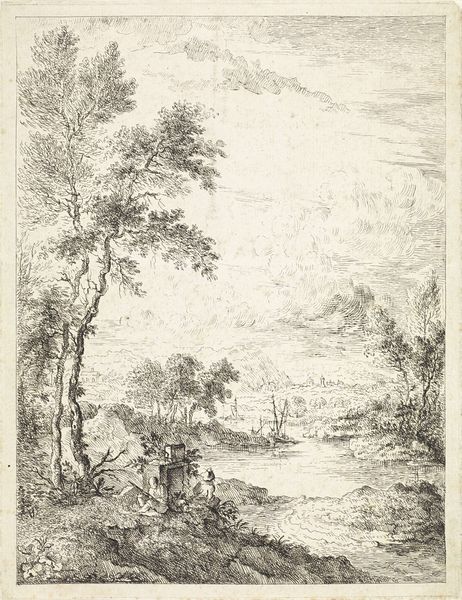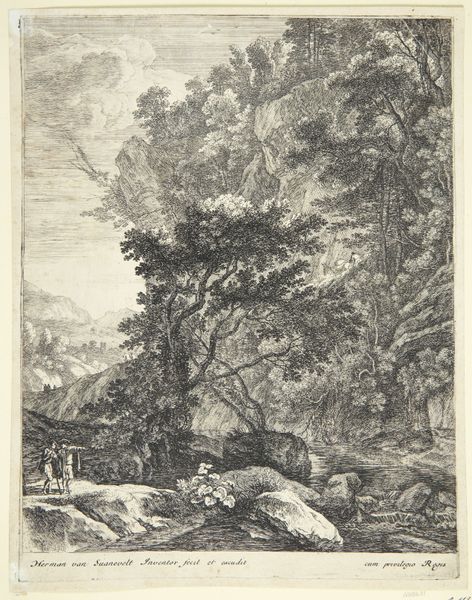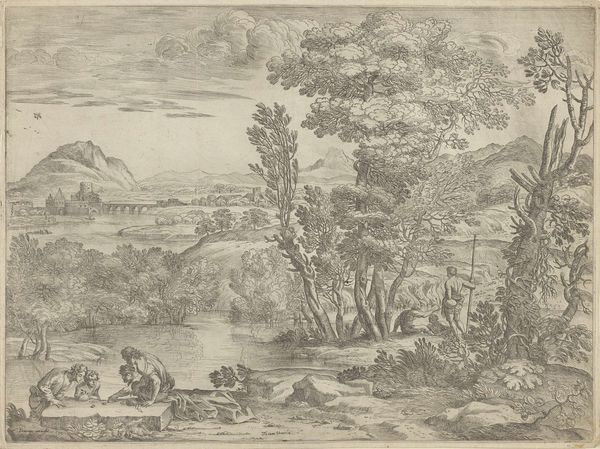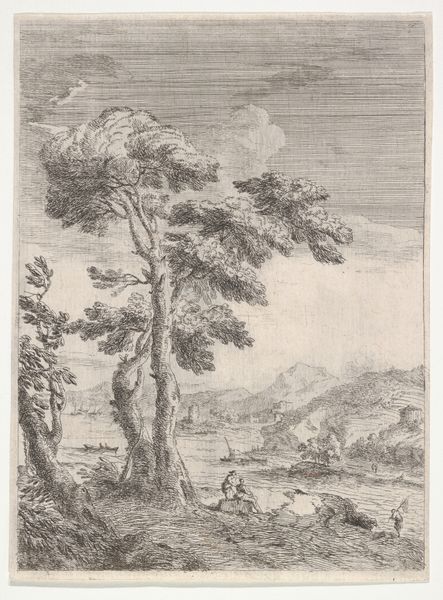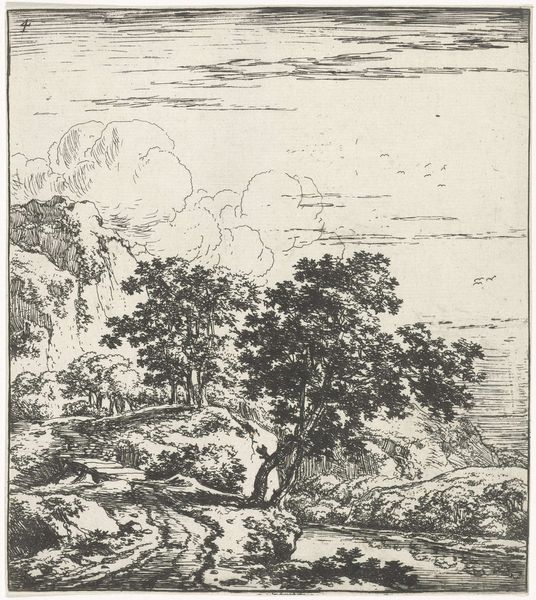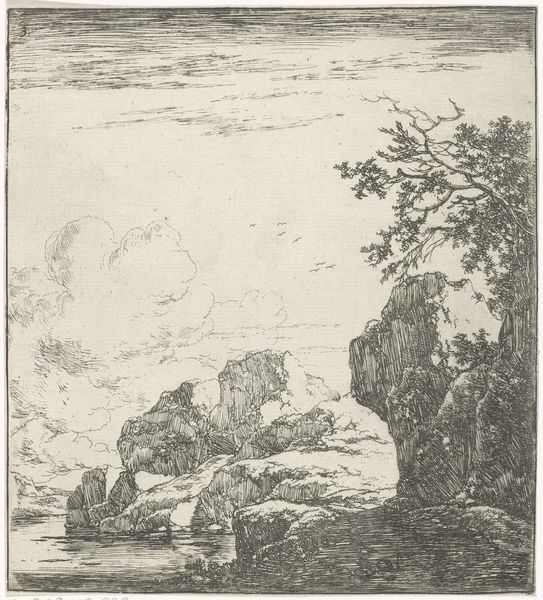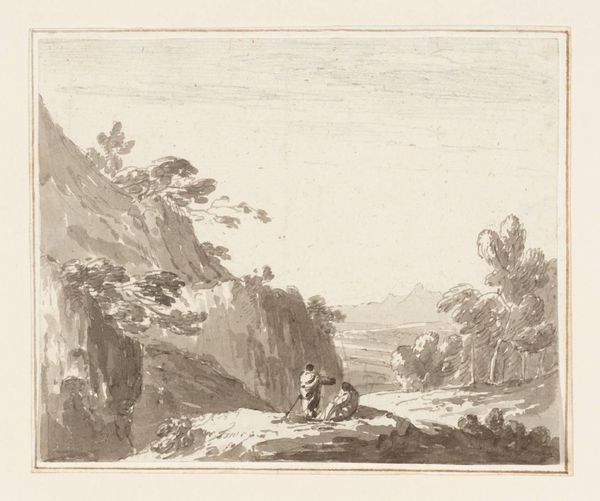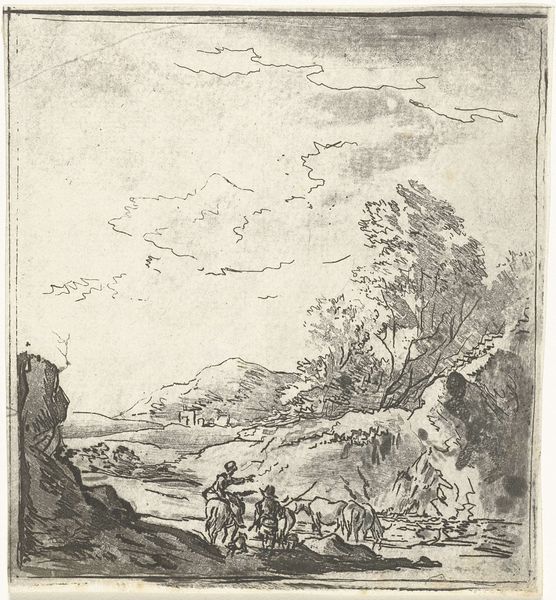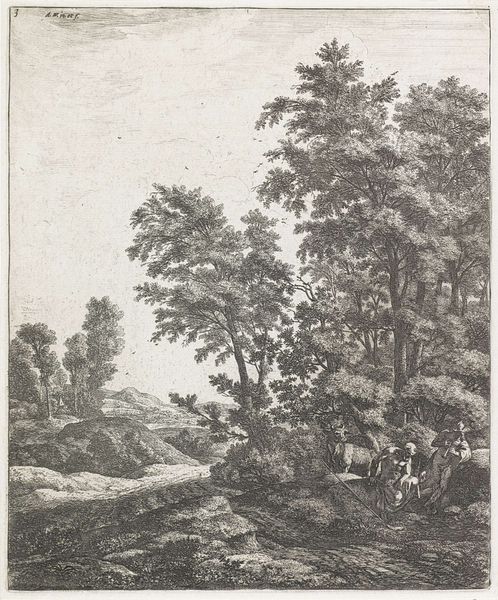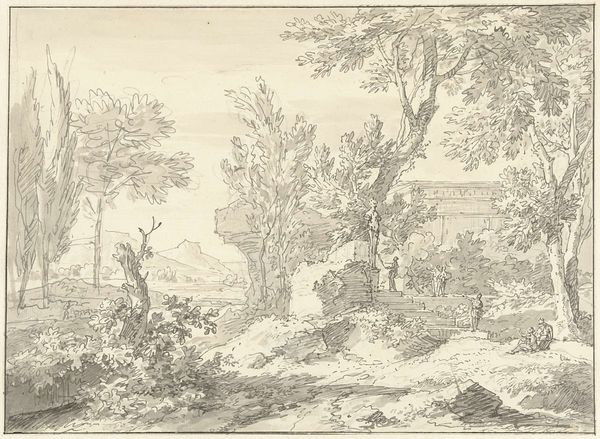
etching
#
baroque
#
etching
#
landscape
#
figuration
#
line
#
italian-renaissance
Dimensions: height 181 mm, width 135 mm
Copyright: Rijks Museum: Open Domain
Paolo Anesi created this landscape scene in ink sometime in the 18th century. The artwork is a serene image of nature, but it also offers insight into the social values of its time. The picturesque scene—rolling hills, a winding stream, and distant architecture— reflects the Enlightenment's fascination with nature and its aestheticization of landscape. This interest wasn't just about pretty views. In 18th-century Europe, ownership of land was a key determinant of social status and power. Art like this could reinforce the idea of a natural order, with the land-owning aristocracy at its apex. The figures placed within the landscape, seemingly at one with nature, also speak to a social ideal of harmony between humanity and the environment. But who really benefited from this harmony? To truly understand the piece, we'd need to delve into estate records, social histories, and even literature of the period. By doing so, we can begin to understand how the art world and social structure were intertwined.
Comments
No comments
Be the first to comment and join the conversation on the ultimate creative platform.


